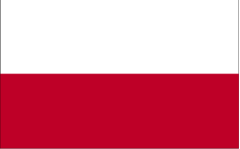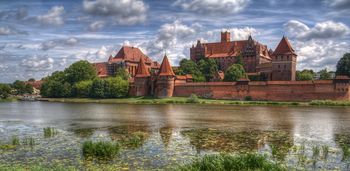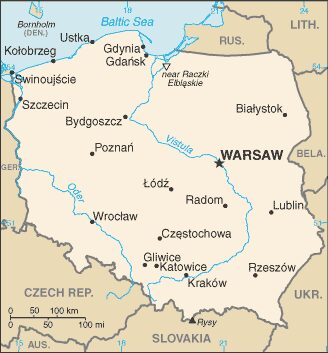Poland: Difference between revisions
imported>Richard Nevell (Removing 19th-century illustration as it's not clear how useful it is) |
mNo edit summary |
||
| (One intermediate revision by one other user not shown) | |||
| Line 13: | Line 13: | ||
==History== | ==History== | ||
{{Image|Malbork Castle, 2010.jpg|right|350px|Poland is home to thirteen [[World Heritage | {{Image|Malbork Castle, 2010.jpg|right|350px|Poland is home to thirteen [[World Heritage sites]] as recognised by [[UNESCO]], including the medieval [[Malbork Castle]] (pictured).<ref>"[http://whc.unesco.org/en/statesparties/pl Poland: properties inscribed on the World Heritage List]", UNESCO, accessed 6 March 2013.</ref>}} | ||
*See [[Poland, history]] | *See [[Poland, history]] | ||
| Line 19: | Line 19: | ||
==Notes== | ==Notes== | ||
{{reflist}} | {{reflist}}[[Category:Suggestion Bot Tag]] | ||
Latest revision as of 11:00, 5 October 2024

Poland (Polish: Polska), officially the Republic of Poland (Polish: Rzeczpospolita Polska), is a large Slavic nation in Central Europe. Its history stretches 1000 years, with interruptions when it was controlled or even divided up by powerful neighbors. It is a member of the European Union and NATO.
Geography
Poland is located in Central Europe and occupies a total area of 312,679 square kilometers. It is bordered by Belarus, the Czech Republic, Germany, Lithuania, a Russian exclave Kaliningrad Oblast, Slovakia, and Ukraine. Poland is predominantly open plains, with the natural borders of the Carpathian Mountains to the south and the Baltic Sea to the north.
Language, Religion, Culture
Religion was a mainstay of Polish identity for a thousand years. It was a refuge from Communist rule, and before that an act of defiance against Prussians and Russians. As the rest of Europe secularized in the late 20th century, the Catholic faith grew stronger in Poland, symbolized by the selection of Karol Cardinal Wojtyła, Archbishop of Kraków, as Pope John Paul II in 1978. By the late 1980s, a third of all priests ordained in Europe were from Poland.[2]
History

Poland is home to thirteen World Heritage sites as recognised by UNESCO, including the medieval Malbork Castle (pictured).[3]
- See Poland, history
- See Ukraine
Notes
- ↑ The colors are somewhat problematic since there is no consensus what are the "correct" colors for the computer screen; this version comes from the CIA World Factbook. Compare with pictures proposed by Polish Ministry of Foreign Affairs [1] and the presidential website.[2].
- ↑ Stanislaw Gomulka and Antony Polonsky, eds., Polish Paradoxes (1991), pp 237-60
- ↑ "Poland: properties inscribed on the World Heritage List", UNESCO, accessed 6 March 2013.
